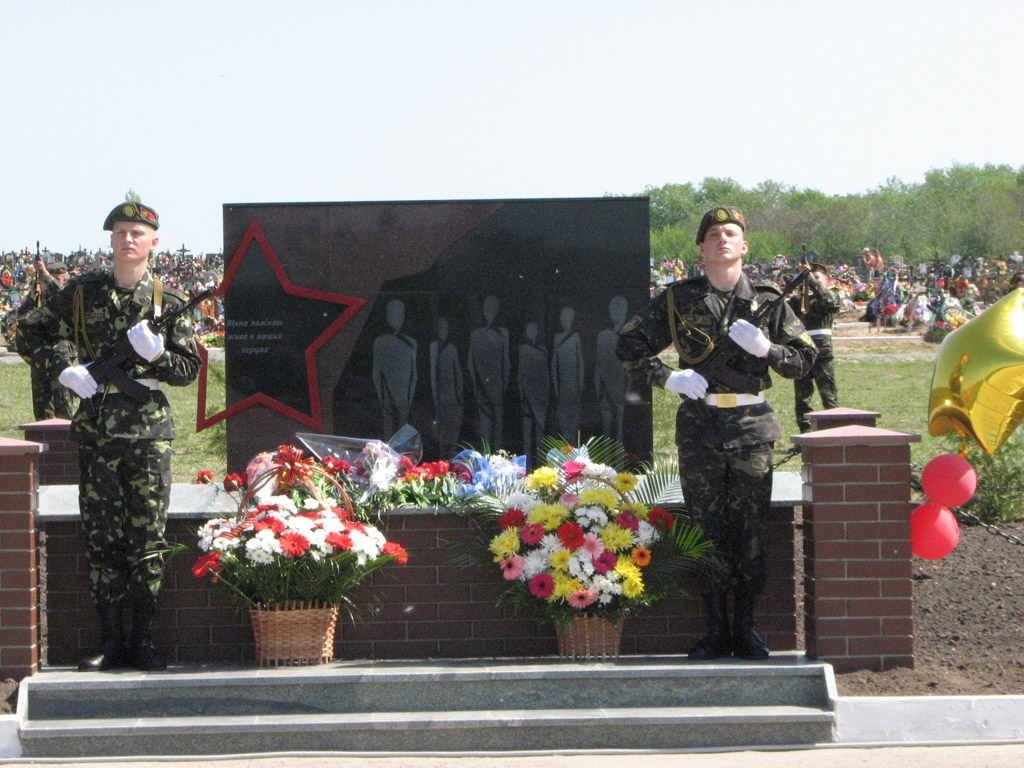- +38(0542)68-77-87
- 116, Kharkivska st., Sumy, Ukraine
- info@el.sumdu.edu.ua
Mass grave of prisoners of war, 1941
Full name of the monument :
Mass grave of prisoners of war, 1941
Region :
Sumy region
Address of the monument :
The area of the former factory of rubber technical products. 350 m from the central entrance, on the left. Sumy city, Sumy district
Status :
Historical monument of local significance
Monument installation year (s) (if available) :
2008
Time classification according to the installation epoch :
Soviet period (1922-1991)
Person/event, object the monument is dedicated to :
real person(s)
Gender :
mixed group
Social status :
persons of war
Components of the monument :
stele - 4.0 x 0.8 m
Material :
mixed materials
Type of art composition :
architectural object(s)
Artistic approach :
abstract art
Main text, additional text (if available) :
Yes
memorial inscription
Language(s) of the text :
Ukrainian
Narrative commemorates :
Honoring the culture of war victims, including memorialization
The preservation state of the monument at the time of the research :
exists
Institution responsible for maintenance :
Sumy city council
Institution’s website :
Free text that contains data valid for interpretation :
288 prisoners of war of the Dulag concentration camp No. 170, which was located on the territory of the former school No. 5, were buried. These are the soldiers of the first draft of the 40th army, formed in the territory of the Sumy and Poltava regions after the defeat of the troops of the South-Western Front near Kyiv, who in September - October 1941 got in captivity Among the dead were also two children, two women and six elderly men. Their remains were found during construction work in Instytutskyi Lane, located behind Oleksandrivska Gymnasium (former school No. 5). During the excavations, a medallion was found that belonged to Danylo Serhiyovych Herashchenko, a native of the village. Bogodarivka, Poltava region. It was established that D. Herashchenko went missing on October 15, 1941 near the village of Sinne Myropilskyi (now Krasnopilskyi) district, Sumy region. In 2008, the remains of the victims were reburied in a mass grave, on which a wooden cross was installed in the same year. In 2010, the cross was replaced by a brick stele covered with pink and black granite slabs. On the left is a red star on the ceiling, in the center of which is a memorial inscription, on the right - on a black granite background - light silhouettes that resemble shadows more than people.

